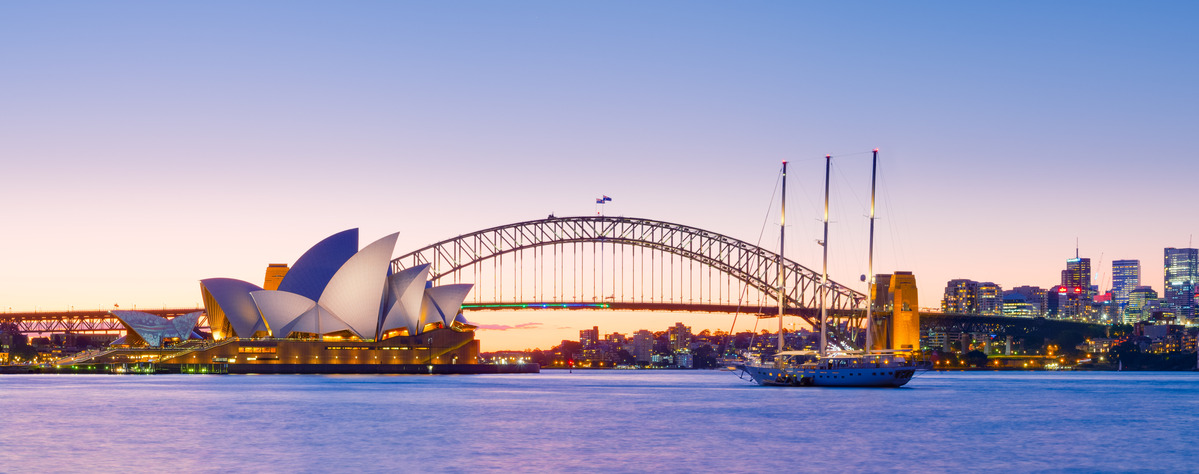Countries all over the world are preparing to reopen domestically after COVID-19, calling for new regulations regarding business and travel.
In Australia, optimism for recovery comes from announcements to revive tourism. Tourism accounts for nearly 3% of the country’s GDP, according to Budget Direct. According to The New York Times, Australian Prime Minister Scott Morrison announced a three-stage plan on May 8 to reopen the economy, including tourism.
Resumed tourism will allow travel between Australia and New Zealand, a plan that’s called the “trans-Tasman bubble.” New Zealand and Australia’s international borders will remain shut for non-residents. Small gathers have begun to resume, along with outdoor activities, as well as takeout and delivery services.
Greece has also announced plans to reopen. According to VisitGreece.org, “some shops and services” have begun to open as part of Greece’s two-month plan as of May 4. People will be required to wear face masks in public and residents will still not be allowed to travel beyond their “wider region of residence,” according to The New York Times. Travel outside of the European Union is banned, in addition to Italy, Spain, the Netherlands and Germany.
On April 28, the Greek government announced its plans to ease restrictions and dedication to return to a “new normal” with “continuous monitoring,” assuring that in future months, it will remain alert for a new outbreak.
Tourism is a large part of the Greek economy, and the country will have to recover over the course of the coming years. Prime Minister Kyriakos Mitsotakis hopes tourism will resume this fall, using testing and contact tracing to prevent spread, according to CNN. There will be more emphasis on social distancing activities and accommodations.
“The tourism experience this summer may be slightly different from what you’ve had in previous years,” Mitsotakis told CNN.
“Maybe no bars may be open, or no tight crowds, but you can still get a fantastic experience in Greece—provided that the global epidemic is on a downward path,” Mitsotakis said.
In Puerto Rico, strategies to begin reopening are underway. The Puerto Rican tourism board announced it will be implementing a two-step program to allow businesses to open under new safety measures.
Mexico has no official date to open, and details on how it will happen is unclear. President Andrés Manuel Lópes Obrador said there is a “light at the end of the tunnel,” and wants the country to begin in areas by May 17 and across the country by June 1, according to Reuters.
All Mexican citizens have been encouraged to stay home, wash hands frequently and maintain social distancing. Large gatherings have also been banned. Air travel remains accessible but is subject to health screenings.
France has announced a “very gradual” ease of restrictions, announced by Prime Minister Édouard Philippe. France’s Parliament has voted to extend closed E.U. borders until July 24. Residents are not allowed to leave their homes without written certificates.
Starting on May 11, small museums, libraries, stores and markets will be the first allowed to open. Masks will be required for the public to wear, along with the practice of social distancing. The French government is incentifying small gathering practices in initiating cycling over public transportation. “Mayor Anne Hidalgo has announced that 30 miles of streets normally used for cars will be reserved for cyclists, including Rue de Rivoli and Boulevard Saint-Michel,” said Kate Schwab, media relations manager at Atout France to The New York Times.
Italy remains one of the countries hit hardest by the pandemic.
A 58-year-old hairdresser working in a small hair salon business in the city of Palermo, Italy said, “The workflow is great. There is no crowd, the ambience is clean, and people finally have to be punctual,” according to Al Jazeera,
Clients have to be booked in advance, be seated six feet apart and employees must wear face masks and santise work stations between appointments.
Other businesses are permitted to reopen, such as restaurants, cafes and clothing shops. The Italian government is trying to prevent triggering a second wave of infection. Italy had been hit by 32,000 deaths and approximately 225,000 infected over the course of the COVID-19 pandemic.
Italian economists are looking towards what will be the new normal. “The economic outlook is awful,” said Flavia Terribile, economist and chair of the OECD Regional Development Policy Committee to Al Jazeera.
Economists stated the Italian economic growth is estimated to drop by 8% this year and will hit the tertiary sector, including culture, tourism and catering.
On May 18, the first set of businesses were allowed to open, and by June 1, bars and restaurants will join them. Some Italians can return to work, and some travel has begun to be permitted.
Italian Prime Minister Giuseppe Conte told Italy to prepare to be “co-existing with the virus.”
How different nations will recover after COVID-19 rests on the ease of certainty of safety and security, all of which might not become apparent until a vaccine becomes available.
